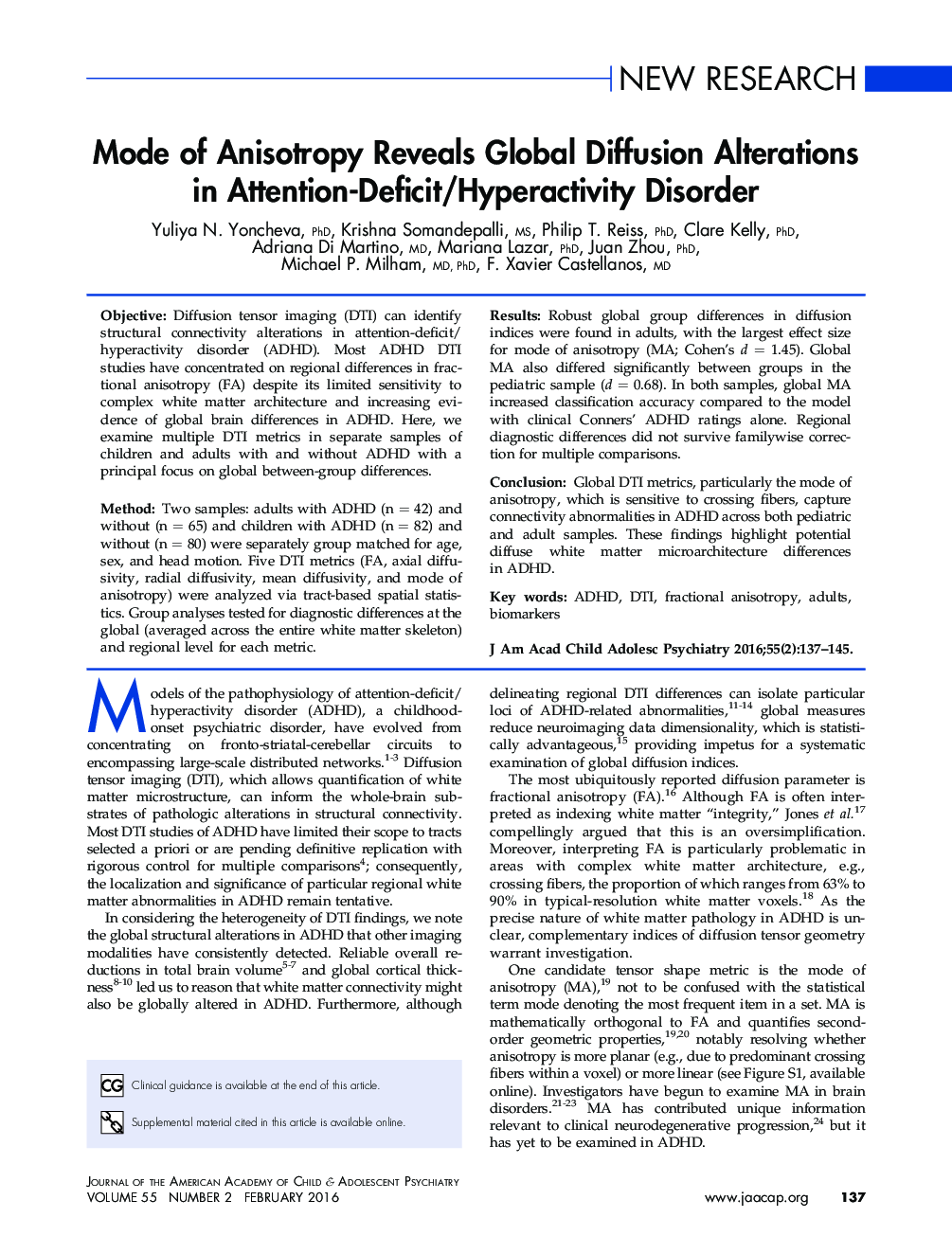| Article ID | Journal | Published Year | Pages | File Type |
|---|---|---|---|---|
| 325178 | Journal of the American Academy of Child & Adolescent Psychiatry | 2016 | 9 Pages |
ObjectiveDiffusion tensor imaging (DTI) can identify structural connectivity alterations in attention-deficit/hyperactivity disorder (ADHD). Most ADHD DTI studies have concentrated on regional differences in fractional anisotropy (FA) despite its limited sensitivity to complex white matter architecture and increasing evidence of global brain differences in ADHD. Here, we examine multiple DTI metrics in separate samples of children and adults with and without ADHD with a principal focus on global between-group differences.MethodTwo samples: adults with ADHD (n = 42) and without (n = 65) and children with ADHD (n = 82) and without (n = 80) were separately group matched for age, sex, and head motion. Five DTI metrics (FA, axial diffusivity, radial diffusivity, mean diffusivity, and mode of anisotropy) were analyzed via tract-based spatial statistics. Group analyses tested for diagnostic differences at the global (averaged across the entire white matter skeleton) and regional level for each metric.ResultsRobust global group differences in diffusion indices were found in adults, with the largest effect size for mode of anisotropy (MA; Cohen’s d = 1.45). Global MA also differed significantly between groups in the pediatric sample (d = 0.68). In both samples, global MA increased classification accuracy compared to the model with clinical Conners’ ADHD ratings alone. Regional diagnostic differences did not survive familywise correction for multiple comparisons.ConclusionGlobal DTI metrics, particularly the mode of anisotropy, which is sensitive to crossing fibers, capture connectivity abnormalities in ADHD across both pediatric and adult samples. These findings highlight potential diffuse white matter microarchitecture differences in ADHD.
